
Kudos has partnered with CardRatings and Red Ventures for our coverage of credit card products. Kudos, CardRatings, and Red Ventures may receive a commission from card issuers. Kudos may receive commission from card issuers. Some of the card offers that appear on Kudos are from advertisers and may impact how and where card products appear on the site. Kudos tries to include as many card companies and offers as we are aware of, including offers from issuers that don't pay us, but we may not cover all card companies or all available card offers. You don't have to use our links, but we're grateful when you do!
What Is JPMCB Card Services and Why Is It on Your Credit Report?
July 1, 2025


Checking your credit report and spotting "JPMCB Card Services" can trigger immediate alarm. Who is JPMCB? Did someone open a fraudulent account? Why is this on your report?
Here's the reality: JPMCB stands for JPMorgan Chase Bank, one of the largest credit card issuers in the United States. If you see this entry on your credit report, it typically means you've had some interaction with a Chase credit card—whether you applied for one, currently hold one, or were added as an authorized user.
But here's what matters most: According to FICO, only 37% of U.S. consumers check their credit reports monthly. That means most people discover mysterious entries like JPMCB months after they appear—when damage may have already occurred to their credit score. Whether this entry is legitimate or unauthorized, understanding what it means and how to handle it can protect your financial future.
What Is JPMCB Card Services?
JPMCB Card Services is how JPMorgan Chase Bank reports credit card activity to the three major credit bureaus: Experian, Equifax, and TransUnion. When you see "JPMCB" or "JPMCB Card Services" on your credit report, it indicates activity related to a Chase-issued credit card.
What types of activity create JPMCB entries:
✔ An active Chase credit card account in your name
✔ A closed Chase credit card (can remain on reports for up to 10 years)
✔ A hard inquiry from applying for a Chase card (stays for 2 years)
✔ A soft inquiry from Chase pre-screening you for offers
✔ Authorized user status on someone else's Chase account
Why it appears as "JPMCB" instead of "Chase": Credit bureaus use standardized reporting names. JPMorgan Chase Bank's official reporting name is JPMCB, which is why all Chase credit card activity—even co-branded cards like Amazon Prime Visa or Southwest Rapid Rewards—appears under this acronym.
Which Cards Report as JPMCB Card Services?
JPMCB Card Services covers a wide range of Chase-issued credit cards, including both Chase-branded cards and popular co-branded cards. You might not realize you have a Chase card because it carries a partner brand name, but if Chase issued it, it reports as JPMCB.
Chase-Branded Cards That Report as JPMCB:
Chase Sapphire Preferred® Card
-
[[ SINGLE_CARD * {"id": "509", "isExpanded": "false", "bestForCategoryId": "4", "bestForText": "Travel Rewards", "headerHint": "$95 Annual Fee"} ]]
[[ SINGLE_CARD * {"id": "497", "isExpanded": "false", "bestForCategoryId": "15", "bestForText": "Cash Back Seekers", "headerHint": "Fantastic Cash Back Card"} ]]
Co-Branded Cards Issued by Chase (Report as JPMCB):
Many consumers don't realize these popular cards are actually Chase products:
- Prime Visa (issued by Chase, reports as JPMCB)
- Marriott Bonvoy Boundless® Credit Card (Chase, reports as JPMCB)
- The World of Hyatt Credit Card (Chase, reports as JPMCB)
Real-world example: If you applied for the Amazon Prime Visa to get 5% back on Amazon purchases, your credit report will show "JPMCB Card Services" as the issuer—not Amazon. The same applies to hotel and airline cards: the partner brand appears on your physical card, but Chase handles the credit reporting.
Not sure which Chase card might work best for your spending? Use Kudos to find the best card offers through CardMatch and see which Chase cards you're likely to qualify for without affecting your credit score.
[[ SINGLE_CARD * {"id": "79", "isExpanded": "false", "bestForCategoryId": "15", "bestForText": "Frequent Amazon Shoppers", "headerHint": "Impressive Rewards and Benefits"} ]]
[[ SINGLE_CARD * {"id": "1188", "isExpanded": "true", "bestForCategoryId": "52", "bestForText": "Frequent Travelers", "headerHint" : "Significant Welcome Bonus" } ]]
[[ SINGLE_CARD * {"id": "2854", "isExpanded": "true", "bestForCategoryId": "52", "bestForText": "Frequent Travelers", "headerHint" : "Attractive Rewards Rate and Benefits" } ]]
5 Reasons JPMCB Appears on Your Credit Report
Understanding exactly why JPMCB Card Services appears on your report helps you determine whether it's legitimate or requires action. Here are the five most common scenarios:
Reason 1: You Applied for a Chase Credit Card
What happened: You submitted a credit card application for any Chase-issued card (including co-branded cards), and Chase performed a hard inquiry to evaluate your creditworthiness.
How it appears: Hard inquiry labeled "JPMCB Card Services"
Impact on credit: Hard inquiries typically reduce your credit score by 5-10 points temporarily. The inquiry remains on your report for 2 years but stops affecting your score after 12 months.
Example: You applied for the Chase Sapphire Preferred® Card in March 2024. Even if you were denied, the hard inquiry from "JPMCB Card Services" will appear on your credit report until March 2026.
Reason 2: You Have an Active Chase Credit Card
What happened: You were approved for a Chase card and currently use it (or the account is still open even if you don't use it).
How it appears: Active tradeline showing "JPMCB Card Services" with your credit limit, balance, payment history, and account age.
Impact on credit:
✔ Positive impact: On-time payments boost your payment history (35% of your credit score)
✔ Positive impact: Low balance relative to credit limit improves credit utilization (30% of your score)
❌ Negative impact: High balances or missed payments harm your score significantly
Example: You opened a Chase Freedom Unlimited® card 18 months ago. Your credit report shows "JPMCB Card Services" with your $5,000 credit limit, current $800 balance (16% utilization), and 18 consecutive on-time payments.
Reason 3: You Closed a Chase Account
What happened: You previously had a Chase credit card but closed the account. Closed accounts in good standing remain on credit reports for up to 10 years after closure.
How it appears: Closed account labeled "JPMCB Card Services" with final payment status and closure date.
Impact on credit:
✔ Positive impact: Positive payment history continues helping your score for years
❌ Negative impact: Reduced available credit increases your overall credit utilization
❌ Negative impact: Account will eventually drop off, potentially lowering average account age
Example: You closed your Amazon Prime Visa in January 2023 after paying it off. The closed account appears on your report as "JPMCB Card Services" and will remain visible until January 2033.
Reason 4: You're an Authorized User
What happened: Someone (family member, partner, friend) added you as an authorized user on their Chase credit card. You didn't apply for credit yourself, but the primary cardholder gave you spending access.
How it appears: Account labeled "JPMCB Card Services" with notation that you're an authorized user (not the primary account holder).
Impact on credit:
✔ Positive impact: If the primary cardholder maintains good payment history and low utilization, your credit score benefits
❌ Negative impact: If the primary cardholder misses payments or maxes out the card, your score suffers
✔ Advantage: You can remove yourself from authorized user status anytime by contacting Chase
Example: Your parent added you as an authorized user on their Chase Sapphire Preferred® Card to help you build credit. The account appears on your credit report as "JPMCB Card Services" even though you never applied for the card.
Reason 5: Chase Pre-Screened You for an Offer
What happened: Chase reviewed your credit profile to determine if you qualify for pre-approved credit card offers. This typically occurs when Chase purchases marketing lists from credit bureaus.
How it appears: Soft inquiry labeled "JPMCB Card Services" (visible only to you, not to other creditors).
Impact on credit: Zero impact. Soft inquiries don't affect your credit score and aren't visible to other lenders reviewing your credit.
Example: You received a pre-approved offer mailer for a Chase card. Even though you didn't apply, Chase performed a soft pull, which appears on your personal credit report as "JPMCB Card Services" but doesn't harm your score.
Is Your JPMCB Entry Legitimate? Here's How to Check
Not every JPMCB entry is authorized or accurate. Credit reporting errors affect approximately 20% of consumers according to a Federal Trade Commission study—and unauthorized activity could indicate identity theft. Follow this decision framework to determine if your JPMCB entry belongs on your report:
Step 1: Identify What Type of Entry You're Seeing
Pull your free credit report from all three bureaus (Experian, Equifax, TransUnion) at AnnualCreditReport.com. Locate the JPMCB entry and note:
- Entry type: Hard inquiry, soft inquiry, open account, or closed account
- Date: When did it appear?
- Details: Account number (if applicable), credit limit, balance
Step 2: Match It to Your Chase Credit Activity
Ask yourself these questions:
For Hard Inquiries:
✅ Did you apply for a Chase credit card in the past 2 years?
✅ Did you apply for an Amazon, Southwest, United, Marriott, or Hyatt card (Chase co-brands)?
✅ Did you authorize Chase to check your credit for any reason?
For Accounts:
✅ Do you currently have any Chase credit cards?
✅ Have you closed a Chase card in the past 10 years?
✅ Has anyone added you as an authorized user on their Chase account?
For Soft Inquiries:
✅ Did you receive pre-approved credit card offers from Chase recently?
✅ Did you check your eligibility for a Chase card without submitting a full application?
Step 3: Review All Three Credit Bureau Reports
JPMCB may report to only one or two bureaus, creating inconsistencies. Compare your reports side-by-side:
- If JPMCB appears on Experian but not Equifax or TransUnion, investigate why
- If the account details differ across bureaus (different balances, dates, or statuses), this suggests a reporting error
Step 4: Contact Chase Directly If Still Unsure
Call JPMCB customer service at 1-800-935-9935 and ask:
- "Do you have any credit card accounts associated with my name and social security number?"
- "Did you perform a hard inquiry on my credit report on [specific date]?"
- "Can you confirm if I'm listed as an authorized user on any accounts?"
Chase can verify whether the entry originated from legitimate activity on your behalf. If they confirm you have no relationship with JPMCB, proceed immediately to dispute the entry.
Red Flags That Indicate Fraud or Errors:
❌ JPMCB hard inquiry but you never applied for any Chase card
❌ Account with unfamiliar account number or credit limit
❌ Activity dates that don't match your memory (account opened before you were 18, for example)
❌ Account showing missed payments when you've never had a Chase card
❌ Multiple JPMCB hard inquiries in a short period when you only applied once
If you spot any red flags, take action immediately. Unauthorized credit activity can damage your score within weeks, making it harder to qualify for mortgages, auto loans, or new credit cards. The faster you address it, the less damage it causes.
Want automated monitoring of suspicious credit activity? Kudos Insights tracks your credit cards and alerts you to unusual activity before it impacts your score.
How to Remove Unauthorized JPMCB Entries: 5-Step Action Plan
If you've determined that JPMCB Card Services appears on your credit report without your authorization—or if the information reported is inaccurate—you have legal rights under the Fair Credit Reporting Act (FCRA) to dispute and remove the entry. Follow this systematic approach to clean up your credit report:
Step 1: Document Everything
Before contacting anyone, gather evidence:
✔ Screenshots or printed copies of your credit reports showing the JPMCB entry
✔ Any correspondence you've had with Chase
✔ Documentation proving you didn't authorize the activity (if applicable)
✔ Notes from phone calls with dates, times, representative names, and what was discussed
Why this matters: Credit bureaus and Chase will require documentation to process your dispute. Having everything organized upfront accelerates the resolution.
Step 2: Contact Chase to Request Proof of Authorization
Call JPMCB customer service at 1-800-935-9935 or mail a written request to:
JPMorgan Chase Bank
P.O. Box 15298Wilmington, DE 19850
What to say/write:
"I'm disputing the JPMCB Card Services entry on my credit report dated [date]. I did not authorize a hard inquiry/account opening. Please provide proof that I authorized this credit check/account. If you cannot provide authorization, please remove this entry from my credit report immediately."
By law, Chase must:
- Investigate your dispute within 30 days
- Provide proof that you authorized the activity
- Remove the entry if they cannot prove authorization
Expected timeline: Chase typically responds within 2-4 weeks. If they confirm the entry is unauthorized or erroneous, they'll instruct the credit bureaus to remove it.
Step 3: File Disputes with All Three Credit Bureaus
Even if Chase agrees to remove the entry, you must also dispute it directly with Experian, Equifax, and TransUnion. Each bureau has an online dispute portal:
- Experian: experian.com/disputes
- Equifax: equifax.com/disputes
- TransUnion: transunion.com/disputes
What to include in your dispute:
- Copy of your credit report with the JPMCB entry highlighted
- Clear explanation: "This JPMCB Card Services entry is unauthorized. I did not apply for a Chase credit card on [date], nor did I authorize Chase to check my credit."
- Supporting documentation (responses from Chase, identity theft reports, etc.)
Timeline: Credit bureaus must investigate within 30 days and notify you of the results. If they cannot verify the entry's accuracy, they're required by law to remove it.
Step 4: Report Identity Theft (If Applicable)
If you believe someone fraudulently opened a Chase account or applied for credit in your name, you must report identity theft to protect yourself legally:
File a report with the Federal Trade Commission:
- Visit IdentityTheft.gov
- Complete the FTC Identity Theft Report
- Print a copy for your records
Place a fraud alert on your credit: Contact one of the three credit bureaus to place a free fraud alert. The bureau you contact must notify the other two:
- Fraud alert lasts 1 year (renewable)
- Requires creditors to verify your identity before opening new accounts
- Doesn't prevent you from applying for credit, but adds extra security
Consider a credit freeze: A credit freeze blocks all access to your credit report, preventing identity thieves from opening new accounts. To freeze your credit:
- Contact all three bureaus separately
- Freezing is free and can be lifted anytime
- Prevents new credit applications (even legitimate ones) until you unfreeze
Step 5: Follow Up Until the Entry Is Removed
Don't assume the dispute process is automatic. Monitor progress:
Weeks 1-2: Chase and credit bureaus acknowledge receipt of your disputes
Weeks 3-4: Bureaus complete investigations and notify you of results
Weeks 5-6: If not resolved, escalate by:
- Sending certified mail to Chase and credit bureaus
- Filing a complaint with the Consumer Financial Protection Bureau (CFPB) at consumerfinance.gov/complaint
- Consulting a consumer rights attorney if the entry causes significant credit damage
Verify removal across all three bureaus: Once removed, pull fresh credit reports from Experian, Equifax, and TransUnion to confirm the JPMCB entry no longer appears. Sometimes one bureau removes it while others don't, requiring additional follow-up.
How long removal takes:
- Legitimate errors: 30-60 days
- Identity theft cases: 60-90 days (requires more documentation)
- Complex disputes: 90-120 days if escalation is necessary
How JPMCB Card Services Impacts Your Credit Score
Understanding how JPMCB entries affect your credit score helps you make informed decisions about Chase credit cards and manage existing accounts strategically. Let's break down the specific credit score impacts:
Hard Inquiries from JPMCB Applications
Score impact: -5 to -10 points (temporary)
Duration: Remains on report for 2 years, but stops affecting score after 12 months
Why it matters: Multiple hard inquiries in a short period signal higher credit risk to lenders. If you apply for several Chase cards within months, each inquiry compounds the negative impact.
Strategic approach: If you're planning to apply for a mortgage or auto loan within the next 12 months, avoid unnecessary credit card applications to preserve your score.
Active JPMCB Accounts: The Credit Utilization Factor
Score impact: Highly variable (can improve or harm your score by 50+ points)
Credit utilization formula: (Total balances across all cards) ÷ (Total credit limits) × 100
What credit bureaus want to see: Under 30% utilization (ideally under 10%)
Example calculations:
Scenario 1: Low utilization (good for your score)
- Chase Freedom Unlimited® credit limit: $5,000
- Current balance: $400
- Utilization: 8%
- Score impact: ✔ Positive (helps your score)
Scenario 2: High utilization (bad for your score)
- Chase Sapphire Preferred® Card credit limit: $8,000
- Current balance: $6,500
- Utilization: 81%
- Score impact: ❌ Severely negative (could drop score by 50+ points)
Why this matters more than you think: Credit utilization represents 30% of your FICO score—the second-largest factor after payment history. Even if you pay on time every month, carrying high balances relative to your limits will tank your score.
Payment History: The Biggest Factor
Score impact: Each missed payment can drop your score by 100+ points
Duration: Late payments remain on credit reports for 7 years
What counts as a missed payment:
- Any payment received 30+ days after the due date
- Even one late payment devastates your score
- Multiple late payments can push your score into "bad credit" territory (below 600)
Real-world example: You have a Chase Amazon Prime Visa with a $2,000 balance. Life gets hectic, and you forget to pay for 35 days. Result:
- -100 to -150 point credit score drop
- "30 days late" notation on your credit report for 7 years
- Difficulty qualifying for new credit cards, mortgages, or favorable interest rates
Prevention strategy: Set up autopay for at least the minimum payment. While carrying a balance isn't ideal (you'll pay interest), it's far better than missing a payment entirely.
Account Age: Long-Term Credit Building
Score impact: Gradual positive impact over years
Why it matters: Average account age represents 15% of your credit score. Older accounts demonstrate long-term creditworthiness.
Strategic consideration: Closing a Chase card reduces your average account age. If you opened your Chase Freedom Unlimited® 5 years ago and it's your oldest card, closing it could drop your average account age from 5 years to 2 years—harming your score.
Best practice: Keep old Chase accounts open even if you rarely use them. Put a small recurring charge on the card (like a $10/month subscription) and set up autopay to keep the account active without effort.
The Hidden Benefit: Authorized User Status
If someone added you as an authorized user on their JPMCB account, you inherit that account's history—including its age and payment history. This can boost your credit score quickly if the primary cardholder has excellent credit.
Example: Your parent adds you as an authorized user on their 10-year-old Chase Sapphire Preferred® Card with perfect payment history. Instantly:
- Your average account age increases
- You gain 10 years of on-time payments
- Your credit score could jump 30-50 points
Risk: If the primary cardholder misses payments or maxes out the card, your score suffers. Always confirm the primary cardholder's creditworthiness before accepting authorized user status.
Want to maximize your credit card benefits and track how your Chase cards impact your overall financial picture? Kudos' Hidden Perks feature analyzes your cards and identifies benefits you're not using—like statement credits, purchase protections, and travel insurance—that can save you hundreds annually.
Preventing Future Unauthorized JPMCB Entries
Taking proactive steps now can prevent unauthorized Chase activity from appearing on your credit report. These strategies protect both your credit score and your identity:
Strategy 1: Opt Out of Pre-Approved Credit Offers
Chase and other issuers purchase lists of consumers who meet their credit criteria, then send pre-approved offers. While the soft inquiries from pre-screening don't hurt your credit score, opting out reduces clutter on your credit report and eliminates the risk of pre-approved offers falling into the wrong hands.
How to opt out:
- Call 1-888-567-8688 (permanent opt-out)
- Visit OptOutPrescreen.com (5-year or permanent opt-out)
Trade-off: You won't receive targeted credit card offers, which occasionally include elevated welcome bonuses or special terms not available to general applicants.
Strategy 2: Monitor Your Credit Reports Monthly
Remember: Only 37% of consumers check their credit reports regularly. Be in that minority.
Free resources:
- AnnualCreditReport.com: Free reports from all three bureaus once per year
- Many credit cards offer free credit monitoring as a cardholder benefit
- Credit monitoring apps send alerts when new inquiries or accounts appear
What to watch for:
- New JPMCB hard inquiries you didn't authorize
- Accounts opened in your name
- Changes to existing account limits or balances that seem incorrect
Action trigger: If you spot any unfamiliar JPMCB activity, investigate within 48 hours. Faster detection means faster resolution and less credit damage.
Strategy 3: Freeze Your Credit When Not Actively Applying
A credit freeze blocks all access to your credit report, preventing anyone (including you) from opening new accounts until you unfreeze it.
When to freeze:
- Not planning to apply for credit in the next 6-12 months
- After experiencing identity theft or data breach exposure
- Traveling internationally where credit fraud risks increase
How to freeze:
- Contact Experian, Equifax, and TransUnion separately
- Freezing is free by federal law
- You'll receive a PIN or password to unfreeze when needed
Convenience factor: Unfreezing takes 5-10 minutes online or by phone, so it adds minimal friction when you legitimately need to apply for credit.
Strategy 4: Secure Your Personal Information
Most Chase fraud stems from data breaches or phishing scams where criminals obtain your Social Security number, birthdate, or other identifying information.
Protection tactics:
- Use strong, unique passwords for every financial account
- Enable two-factor authentication on Chase accounts
- Never share credit card details via email or text
- Shred pre-approved credit offers instead of discarding them intact
- Be suspicious of unsolicited calls claiming to be from Chase (hang up and call the official number)
Data breach response: If a company you've done business with experiences a data breach, immediately place a fraud alert on your credit and monitor for suspicious activity.
Strategy 5: Understand Authorized User Risks
Before accepting authorized user status on someone's Chase card, verify:
✔ Their payment history (ask to see recent statements)
✔ Their current balance relative to the credit limit
✔ Their commitment to maintaining good credit habits
Red flags:
- Frequent late payments
- Maxed-out credit limits
- Multiple cards in collections
If you're added as an authorized user and later discover the primary cardholder has poor credit habits, remove yourself immediately by calling Chase. The account will fall off your credit report within 30-60 days.
Bottom Line: Taking Control of JPMCB Card Services on Your Credit Report
Seeing "JPMCB Card Services" on your credit report is typically legitimate—it simply means you've interacted with JPMorgan Chase Bank through a credit card application, active account, or authorized user status. However, approximately 20% of credit reports contain errors, and identity theft affects millions of Americans annually, making it crucial to verify that every JPMCB entry belongs on your report.
Take action now if:
✅ You spot a JPMCB entry you don't recognize
✅ The dates or account details don't match your Chase credit activity
✅ You never applied for a Chase or co-branded card (Amazon, Southwest, United, Marriott, Hyatt)
✅ You suspect identity theft
The 5-step removal process:
- Document the unauthorized entry
- Contact Chase at 1-800-935-9935 for verification
- File disputes with all three credit bureaus
- Report identity theft to the FTC if applicable
- Follow up until removal is confirmed
Prevention strategies to protect your credit:
- Monitor your credit reports monthly (free at AnnualCreditReport.com)
- Opt out of pre-approved offers at OptOutPrescreen.com
- Freeze your credit when not actively applying for new accounts
- Set up transaction alerts on all credit cards
Managing your Chase cards strategically can boost your credit score rather than harm it. Keep utilization under 30%, never miss payments, and maintain old accounts even if you don't use them frequently. If you're leveraging multiple Chase cards for rewards, tools like Kudos automatically identify which card earns the most on each purchase—helping you maximize value while building strong credit.
Download Kudos for free to optimize your credit card strategy and track your credit card benefits effortlessly.
Frequently Asked Questions
What does JPMCB stand for on a credit report?
JPMCB stands for JPMorgan Chase Bank. It's the official name Chase uses when reporting credit card activity to the three major credit bureaus (Experian, Equifax, and TransUnion). If you see "JPMCB Card Services" on your credit report, it indicates you've had some interaction with a Chase-issued credit card—whether that's an application, an active account, a closed account, or authorized user status.
Why is JPMCB Card Services on my credit report if I don't have a Chase card?
There are several reasons JPMCB might appear even if you don't think you have a Chase card. First, many popular co-branded cards are issued by Chase but don't carry the Chase name—examples include the Amazon Prime Visa, Southwest Rapid Rewards cards, United airline cards, Marriott Bonvoy cards, and World of Hyatt Card. Second, you might have been added as an authorized user on someone else's Chase account. Third, you may have closed a Chase card years ago, but it remains on your report for up to 10 years. Finally, Chase may have performed a soft inquiry to pre-screen you for credit offers, which appears on your personal report but not to other lenders.
How do I remove JPMCB from my credit report?
If the JPMCB entry is legitimate (you applied for or have a Chase card), you generally cannot remove it unless there's an error. However, if the entry is unauthorized or inaccurate, follow these steps: (1) Contact Chase at 1-800-935-9935 and request proof that you authorized the activity; (2) File disputes with all three credit bureaus using their online portals; (3) If you suspect fraud, report it to the Federal Trade Commission at IdentityTheft.gov; (4) Follow up every 2 weeks until the entry is removed. By law, credit bureaus must investigate within 30 days and remove any entry they cannot verify as accurate.
Does JPMCB hurt my credit score?
It depends on the type of JPMCB entry and how you manage the account. A hard inquiry from a credit card application causes a temporary 5-10 point drop that recovers within 12 months. An active account can help or hurt your score: on-time payments and low balances boost your score, while late payments or high utilization (using more than 30% of your credit limit) can drop your score by 100+ points. Soft inquiries from Chase pre-screening you for offers have zero impact on your credit score.
How long does JPMCB stay on my credit report?
The duration depends on the entry type: Hard inquiries from credit applications remain for 2 years but stop affecting your score after 12 months. Active or closed accounts in good standing stay on your report for up to 10 years after closure. Negative marks like late payments or charge-offs remain for 7 years. Authorized user accounts stay on your report as long as you remain an authorized user; once removed, the account typically falls off within 30-60 days.
Can I dispute a JPMCB hard inquiry?
Yes, you can dispute a hard inquiry if you did not authorize Chase to check your credit. Contact Chase at 1-800-935-9935 and ask them to provide proof that you authorized the inquiry. If they cannot provide documentation of your authorization, they must remove the inquiry. Additionally, file disputes directly with the three credit bureaus. By law, unauthorized inquiries must be removed from your report if they cannot be verified.
What is a JPMCB credit card?
A JPMCB credit card is any credit card issued by JPMorgan Chase Bank, which includes both Chase-branded cards (like Chase Sapphire Preferred® Card and Chase Freedom Unlimited®) and co-branded cards issued in partnership with other companies (like Amazon Prime Visa, Southwest Rapid Rewards cards, United airline cards, Marriott Bonvoy cards, and World of Hyatt Card). All of these cards report to credit bureaus as "JPMCB Card Services" regardless of which brand name appears on the physical card.
What should I do if someone fraudulently opened a JPMCB account in my name?
Take immediate action to protect your credit and identity: (1) Call Chase at 1-800-935-9935 and report the fraudulent account; (2) File an identity theft report at IdentityTheft.gov; (3) Place a fraud alert on your credit by contacting one of the three credit bureaus (they'll notify the other two); (4) Consider freezing your credit to prevent additional fraudulent accounts; (5) File a police report if recommended by Chase or your local authorities; (6) Dispute the fraudulent account with all three credit bureaus. Document everything and follow up regularly until the fraudulent account is removed from your credit report.
Unlock your extra benefits when you become a Kudos member

Turn your online shopping into even more rewards

Join over 400,000 members simplifying their finances

Editorial Disclosure: Opinions expressed here are those of Kudos alone, not those of any bank, credit card issuer, hotel, airline, or other entity. This content has not been reviewed, approved or otherwise endorsed by any of the entities included within the post.


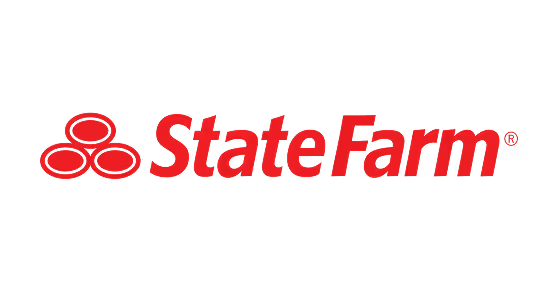
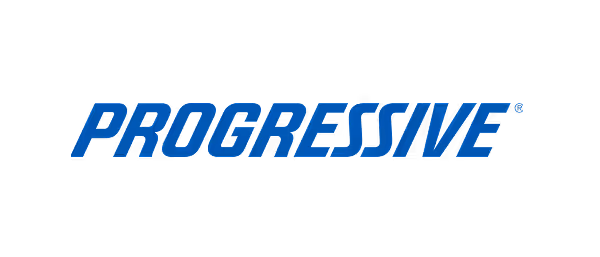
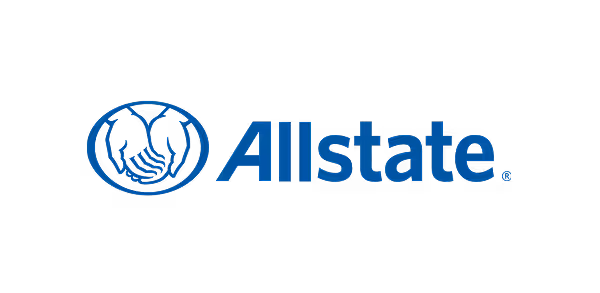



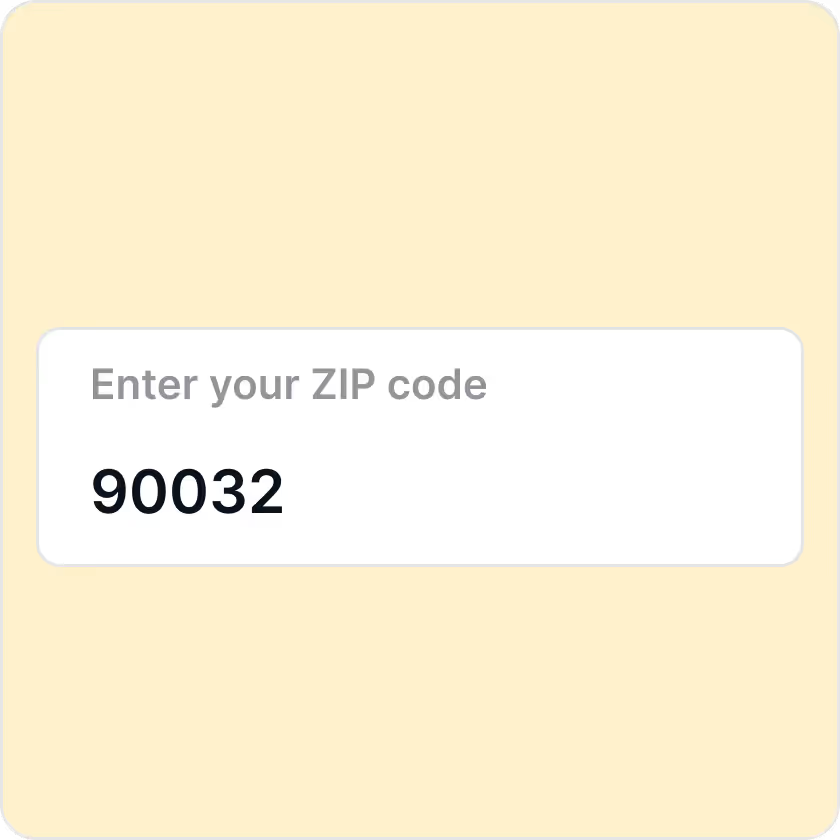

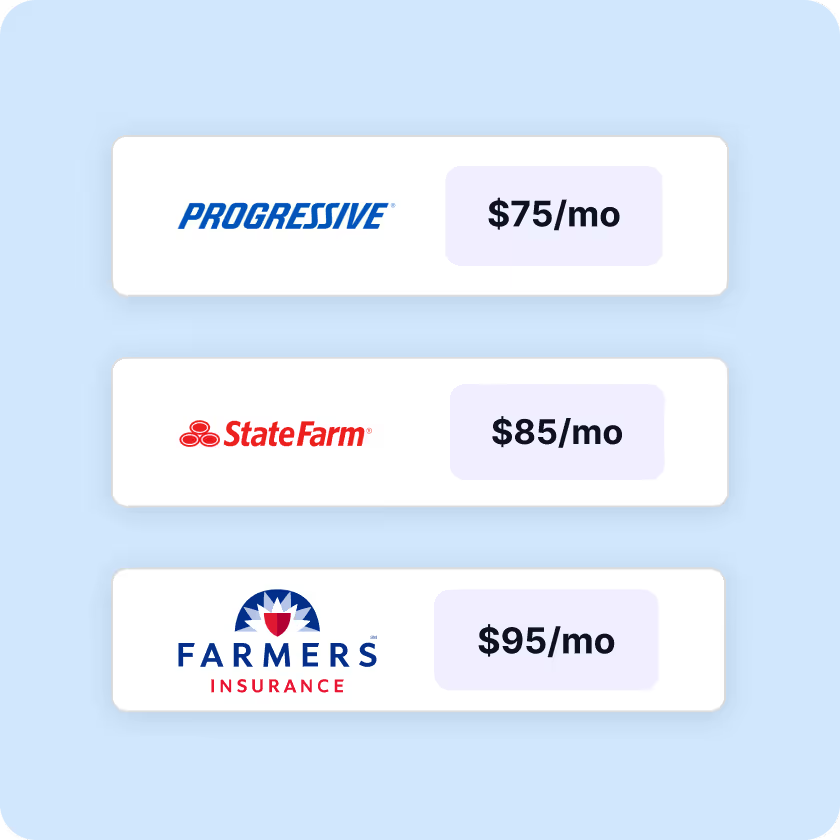








.webp)






















.webp)
.webp)